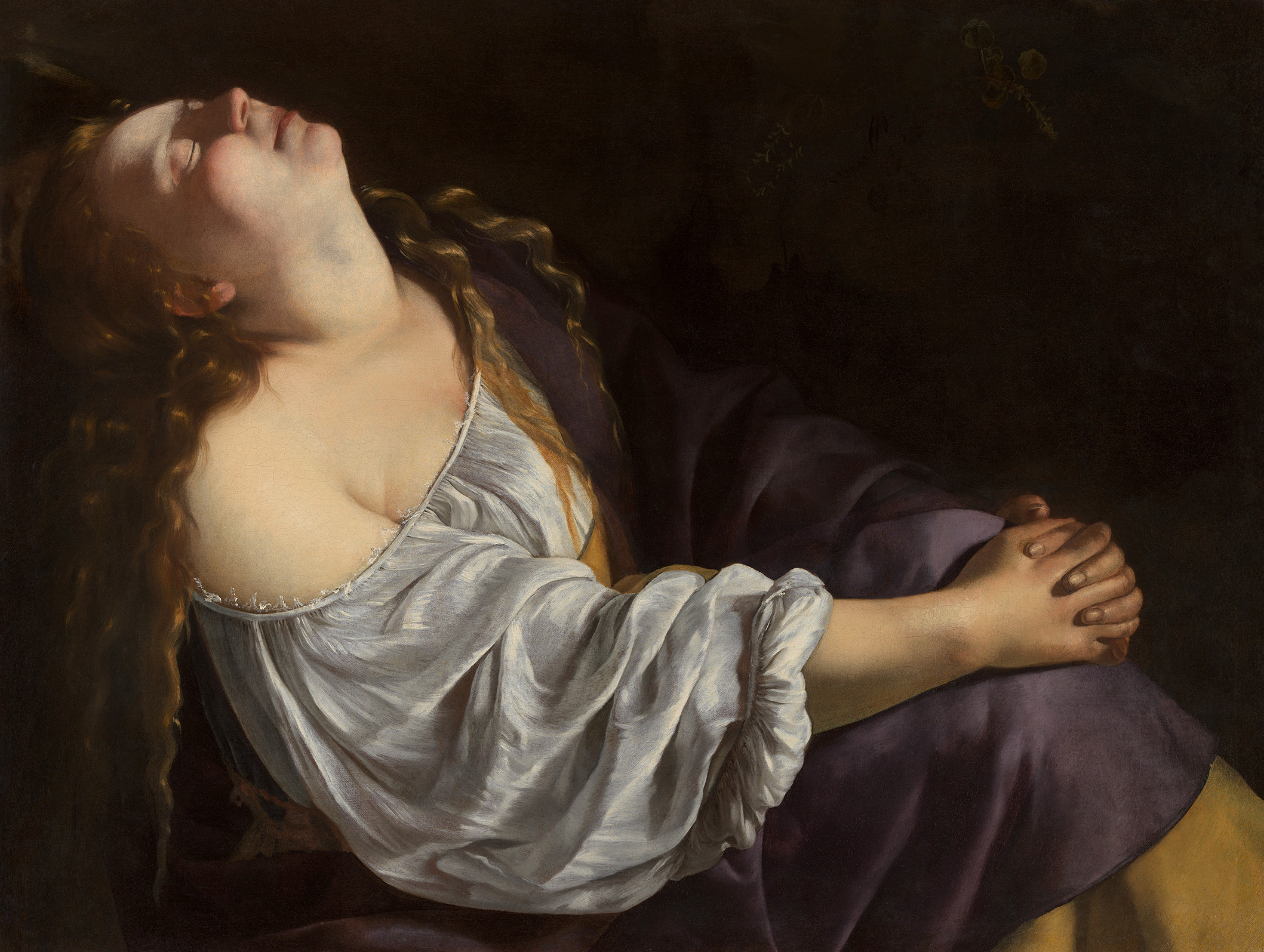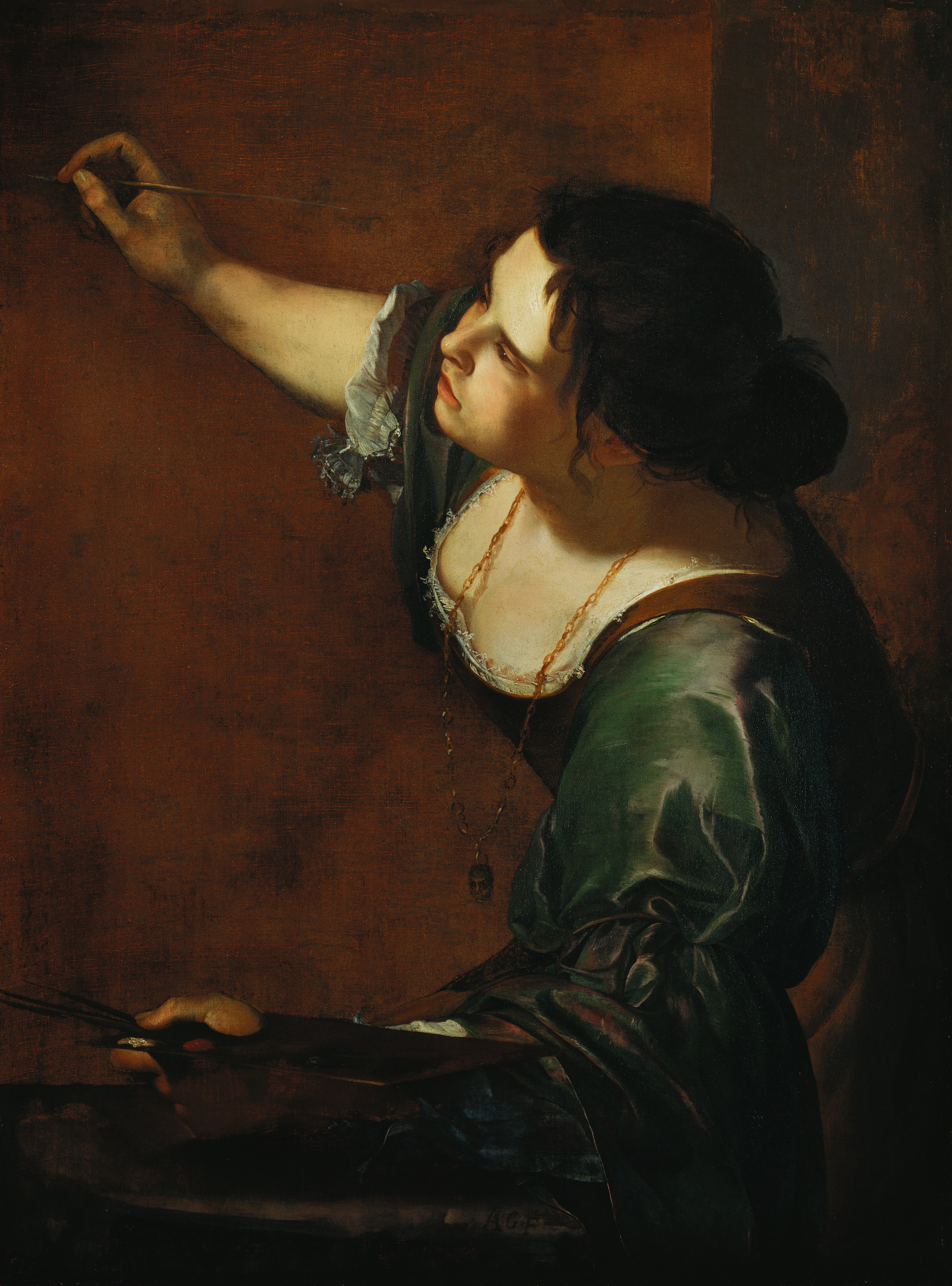We continue our special month with "Caravaggio & Bernini" exhibition, on show at Kunsthistorisches Museum in Vienna until January 20th, 2020. It's a real must-see of this year, don't miss it! And if you can't make it to Vienna, read us for the next three Sundays :)
On its rediscovery in 2011, this painting of Mary Magdalen by Artemisia Gentileschi was dated to between 1613 and 1620, the years the painter spent in Florence. The painting offers a completely original interpretation of a popular seventeenth-century subject. In that period, Mary Magdalen was seen as a woman who repented of a sinful life when she became a devoted follower of Jesus, dramatically rejecting an errant past as a prostitute and embracing a pious future. Artists often reflected the theme of conversion with a flood of heavenly light covering her face and torso. Depicted with a sensuous body and luxuriant hair, she was usually seen clasping her hands in prayer or touching a symbol, most often a skull, representing the physical world of sin, or a book as a pledge of eternal life to be striven for through meditation and prayer. Mary Magdalen’s expression usually conveyed remorse, devotion, divine transport or contemplation.
What is unique in Gentileschi’s painting is its evocation of a heroine overwhelmed by deep personal contentment as she fully surrenders to God, rejoicing in her newly found faith. In a reference to her sinful past, her chemise slips to reveal her right shoulder and hint at the gentle swelling of her right breast. As the moment of conversion overtakes her she throws back her head in a pose associated with suffering and pathos, but her slight smile is evidence enough of the peace she is finding on her new path. Her neck and upper torso are bathed in streaming light. She contemplates no specific object – no skull, crucifix or text. The ointment bottle, her traditional attribute, is absent. The Magdalen does not direct her gaze at some unseen heavenly force, but responds to an inner vision. There are no tears or signs of emotional turmoil. Her clasped hands express neither prayer nor earthly renunciation but merely embrace her knees to draw them joyfully to her torso. Mary Magdalen is bathed in the light of spiritual illumination – Artemisia has presented her poised at the moment of her transition from sinner to saint. JWM
P.S. Read about Artemisia Gentileschi, the rape survivor and about her revenge here. Girl power!


 Artemisia Gentileschi
Artemisia Gentileschi